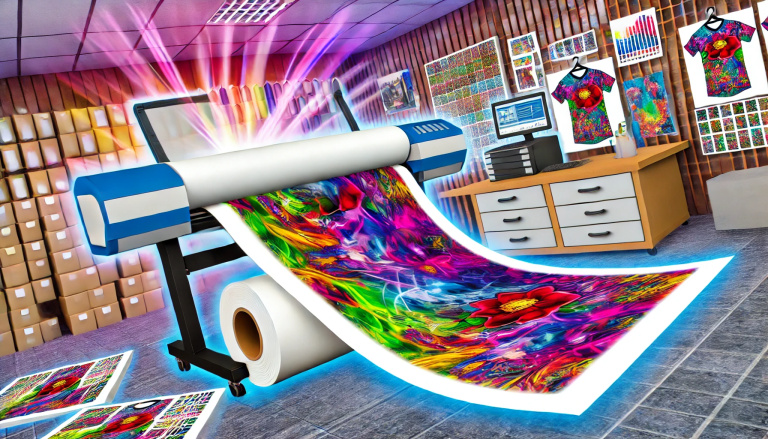Understanding the Basics of Transfer Papers
Fabric transfer papers and sublimation transfer papers are two distinct types of materials used in the realm of printing on fabrics, each with its own unique characteristics and functions. Fabric transfer papers are typically designed to transfer printed images onto fabrics through a heat – press process. They often have a coating that allows the ink to adhere to the paper and then be transferred to the fabric surface. On the other hand, sublimation transfer papers are specifically formulated for sublimation printing, a process where special sublimation inks turn from a solid to a gas under heat and pressure, penetrating the fibers of polyester – based fabrics.
The Chemical and Physical Differences
The chemical composition of fabric transfer papers and sublimation transfer papers sets them apart. Sublimation papers are engineered to hold sublimation inks, which are dye – based and require a specific environment to sublimate. These inks need to be on a paper that can release them cleanly at high temperatures without leaving any residue. In contrast, fabric transfer papers may use different types of inks, such as pigment – based inks, which sit on the surface of the fabric rather than penetrating it. Physically, sublimation papers are often thinner and have a smoother surface to ensure even ink distribution and release during the sublimation process, while fabric transfer papers can vary in thickness and texture depending on the intended application.
Compatibility with Sublimation Inks
One of the key factors in determining whether fabric transfer paper can be used for sublimation is its compatibility with sublimation inks. Sublimation inks have unique properties that require a specific paper surface to react properly. Fabric transfer papers are not typically designed to work with sublimation inks. If you try to use fabric transfer paper with sublimation inks, the inks may not sublimate as expected. They could remain on the surface of the paper or transfer incompletely to the fabric, resulting in a faded, blurry, or uneven print. The lack of proper chemical interaction between the fabric transfer paper and sublimation inks can lead to poor – quality transfers.
Impact on Fabric Types
The type of fabric also plays a crucial role in this discussion. Sublimation works best on polyester fabrics because the polyester fibers have open spaces that allow the sublimated inks to bond with the fibers at a molecular level. Fabric transfer papers, however, may be more versatile in terms of the fabric types they can work with, including cotton and cotton – blend fabrics. But when it comes to sublimation, using fabric transfer paper on non – polyester fabrics will not yield the desired results since sublimation cannot occur effectively on these materials. Even if you manage to transfer an image using fabric transfer paper on a non – polyester fabric, it will not have the same durability and vibrancy as a sublimation print on polyester.
The Verdict: Stick to Sublimation Papers
In conclusion, fabric transfer paper is not suitable for sublimation. The chemical, physical, and ink – compatibility differences between the two types of papers make it clear that using fabric transfer paper for sublimation will lead to subpar results. To achieve high – quality, long – lasting sublimation prints on polyester fabrics, it is essential to use the correct sublimation transfer paper. By using the appropriate materials, you can ensure that your sublimation projects turn out vibrant, detailed, and durable, meeting your expectations for professional – looking fabric prints.




